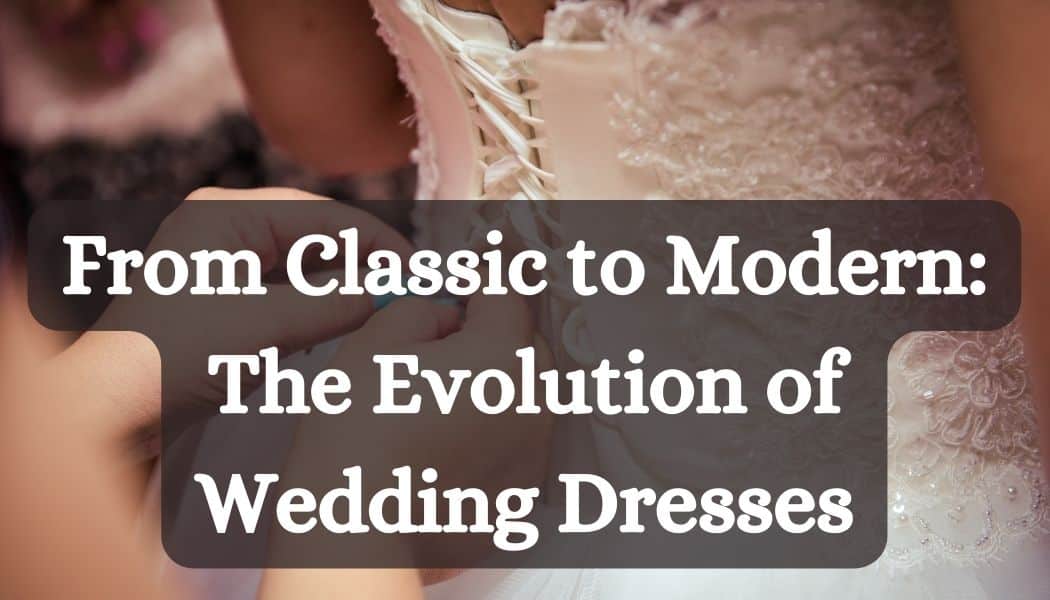
Wedding dresses have come a long way in the past few centuries. From conservative gowns that covered everything to modern pieces featuring intricate details and many layers of fabric.
Throughout its evolution, the wedding dress has been integral to what couples envision for their big day. It is crafted, and many reflect the changing culture and trends.
As we look back at how wedding gowns have changed over time. Let’s explore some notable landmark moments that replaced tradition with more daring silhouettes, leading to one fantastic statement piece.
Table of Contents
A Brief History of the Wedding Dress
From its earliest days, the wedding dress has been a powerful symbol of femininity, purity, and fertility.
The wedding dress is an iconic and traditional piece of clothing that has been around for centuries. It has seen many iterations and transformations. From the primitive to the sophisticated, reflecting society’s fashion and cultural trends.
While today’s modern wedding dress is associated with a white colour scheme and structured design, its long history suggests much more. Tracing the roots of the contemporary wedding dress back to ancient times reveals a timeline filled with symbolism, superstition, and feminism.
In ancient Rome, women wore an all-white affair to symbolize purity, fertility, and femininity. Something which had not changed until recently when more brides started forgoing white in favour of other colours like pink or blue.
As time passed, the religious connotations of a white wedding dress became less important in favour of fashion statements: corsets, layers of lace, and trains. And intricate embroidery set trends as European royalty introduced new styles.
We are now seeing a combination of both classical influences and modern elements. Like off-the-shoulder necklines or plunging v-necks in today’s wedding dress designs. Something that feminist essays have embraced as an example of women reclaiming control over their narratives. The wedding dress serves an aesthetic purpose and represents a long history of femininity.
While times may change and fashion may evolve. The significance of donning a beautiful wedding dress will likely remain with us for many years.
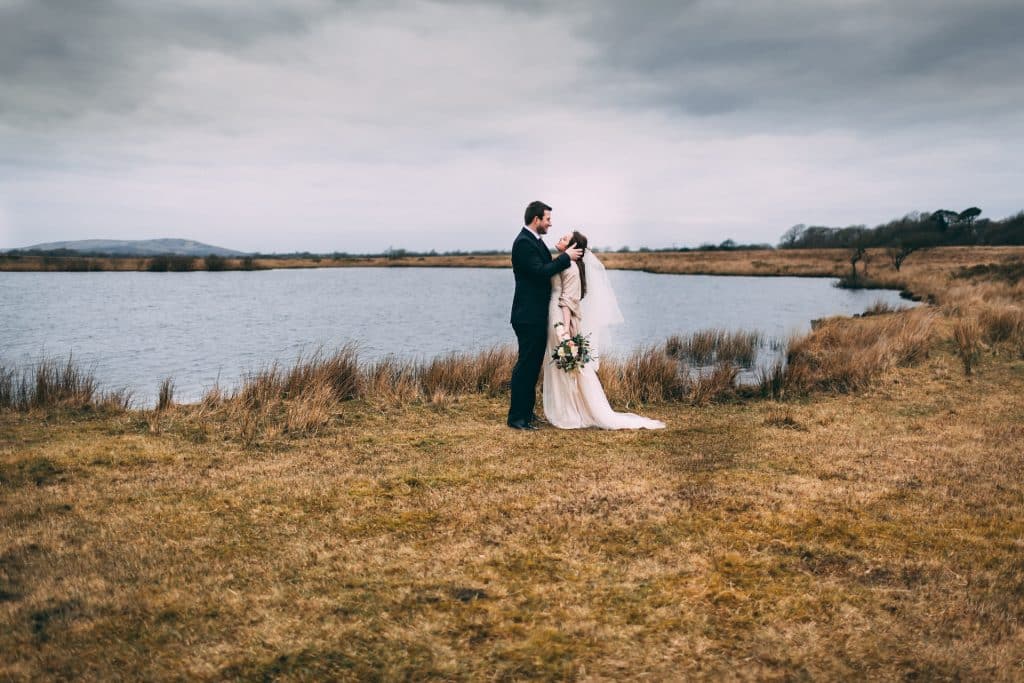
How Religion Has Influenced the Design of Wedding Dresses
Throughout the ages, religion has significantly influenced how wedding dresses are designed, from materials and fabric to silhouette and styling.
Since the Middle Ages, when Christianity dominated Europe, western brides have worn white gowns with long trains or veils. In Judaism, brides wear delicate fabrics such as velvet or satin in blue or white. At the same time, Eastern Orthodox brides may choose a long gown embroidered with gold thread along with a veil that symbolizes purity.
Religion isn’t about outward appearances either – it also impacts how couples enter matrimony and their responsibilities within marriage.
It’s no surprise that religion has shaped the design of wedding dresses for generations, allowing us to continue to preserve traditional values and beliefs in modern times.
Popular Styles Through the Ages and their influence on Trends
Wedding dresses have evolved over the centuries, with styles and trends changing, often coming full circle to become popular again.
Let’s look at the changing styles and trends in wedding dress design.
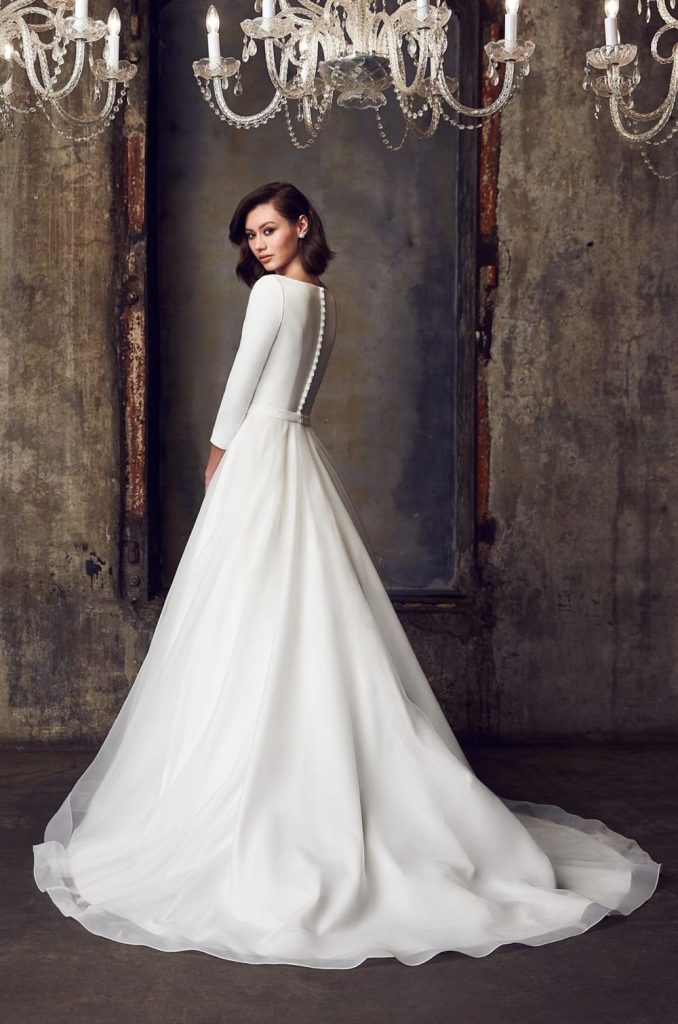
- The Victorian Era (1837-1901). The Victorian era was a time of significant change in the fashion world. Before this period, most women wore their best Sunday dress to their weddings. But Queen Victoria changed everything when she wore a white wedding dress to her ceremony in 1840. This set a precedent for future brides, and the white wedding dress has remained a popular choice.
- The Edwardian Era (1901-1910). The Edwardian era was marked by a return to simpler, elegant styles after the opulence of the Victorian era. Wedding dresses became less fussy, with fewer layers of fabric and less elaborate adornments. Early in the 20th century, this pattern persisted.
- The Roaring Twenties (1920-1929). The 1920s were a time of significant change, reflected in the styles of wedding dresses that were popular during this period. Hemlines rose, and skirts became much more form-fitting. This was a far cry from the modest styles that had been fashionable in previous decades.
- The Great Depression (1929-1939). The Great Depression significantly impacted the fashion industry, and wedding dresses were no exception. With money tight, many brides opted for simple, inexpensive dresses that could be worn again after the big day. This trend continued throughout the 1930s.
- The Post-War Era (1939-1945). After years of austerity during the war years, brides in the post-war era were eager to embrace more lavish styles once again. Wedding dresses became more embellished, with intricate beading and lace details becoming popular.
- The Modern Era (1945-present). Wedding dress styles have changed since the end of World War II. Today, no hard and fast rules exist for choosing a wedding dress. Many brides prefer more traditional styles, while others prefer more daring ones.
The Rise of Non-Traditional Wedding Dress Styles in Recent Years
In recent years, non-traditional wedding dress styles have become popular as brides look for unique and individualized ways. On their big day, to express themselves.
From bright colours and bold cuts to minimalist details and unconventional fabrics. Modern wedding dresses are often a far cry from the traditional white gowns that defined bridal style for centuries.
Gen-Zers drive this movement, often opting for daring silhouettes like jumpsuits with jewelled collars or subtle statement pieces like sheer lacy sleeves.
These trends contrast the traditional white dress with a voluminous skirt. Pushing the bounds of what is accepted as wedding wear while maintaining an air of elegance and sophistication.
Non-traditional styles are growing in popularity among contemporary brides. Allowing them to make a personal statement as they walk down the aisle.
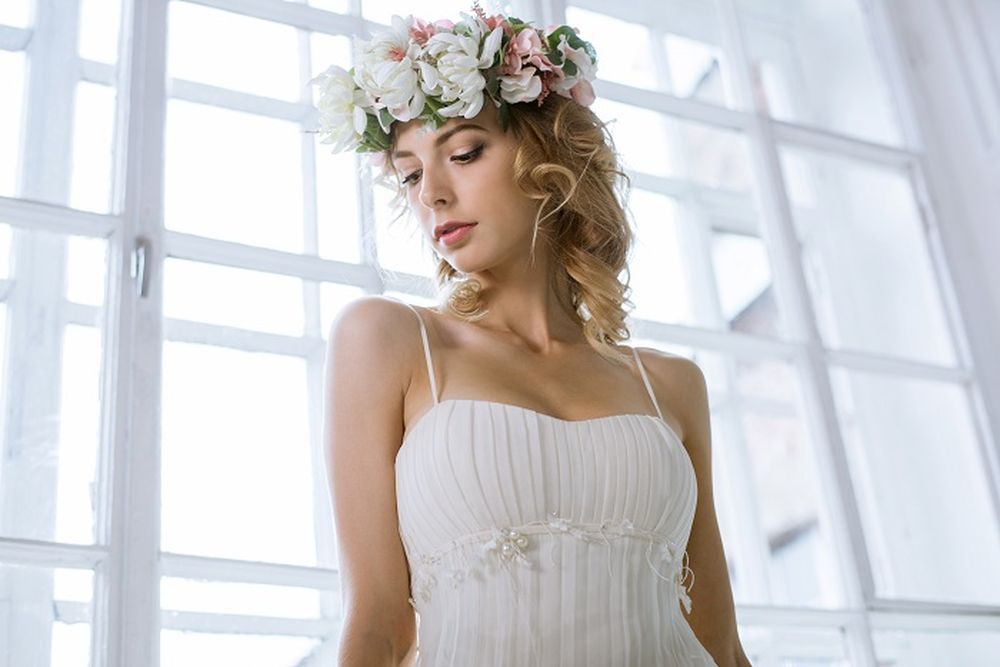
How Cultural Trends Impact the Popularity of Certain Dress Styles
- Royal Weddings. One of the most significant cultural trends that have affected the popularity of certain wedding dress styles is royal weddings. In recent years, there have been many high-profile royal weddings, including Prince William and Kate Middleton’s weddings, Prince Harry, Meghan Markle, and Princess Eugenie and Jack Brooksbank. These weddings have been publicized and have served as inspiration for many brides-to-be.
- The Meghan Markle Effect. The trend that has impacted wedding dress styles has been dubbed the “Meghan Markle effect.” This refers to the Duchess of Sussex’s impact on fashion trends since she married Prince Harry in 2018. Meghan Markle’s wedding dress, designed by Clare Waight Keller for Givenchy, was sleek and straightforward, deviating from the more traditional style of royal wedding dresses. The “Meghan Markle effect” has led to a surge in the popularity of more modern and minimalist wedding dress styles.
- Celebrity Weddings. The popularity of certain wedding dress styles is celebrity weddings. In recent years, there have been many high-profile celebrity weddings, including Kim Kardashian and Kanye West, Chrissy Teigen and John Legend, and Priyanka Chopra and Nick Jonas. These weddings have been publicized and have served as inspiration for many brides-to-be.
- Social Media. Another cultural trend that has impacted the popularity of certain wedding dress styles is social media. Social media platforms such as Pinterest and Instagram have become popular recently. And many brides-to-be use these platforms to get inspiration for their weddings. A quick search on Pinterest or Instagram will reveal many images of beautiful wedding dresses. This can help narrow the choices for a bride-to-be looking for the perfect dress for her big day.
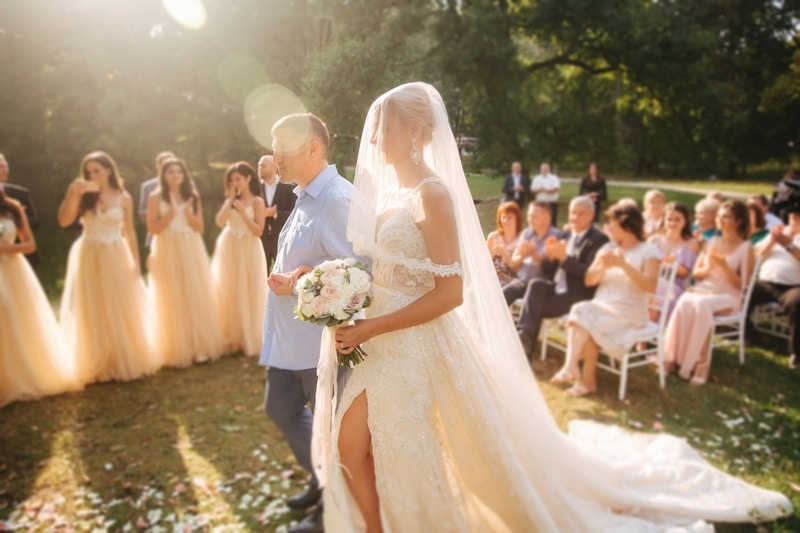
Conclusion
Wedding dresses have transformed throughout the years thanks to fashion, technology, and cultural influences.
They reflect the current trends of society at any given time. From less is more in the roaring 1920s to more is more during the luxury of the 80s, wedding dress designs have grown diverse.
They have gone through different silhouettes and structural designs. Adapting themselves to changing tastes and occasions. The modern bride has a selection beyond measure. Whether she desires a classic gown with timeless elegance or a fairytale-inspired creation with intricate details. There are no limits to her ultimate dream of walking down the aisle looking like royalty in a one-of-a-kind dress.
Wedding dresses showcase sophistication and beauty depending on what brides want to express on their special day, which makes them a fantastic expression of personal style.
About author
Rob Talley is a content writer for websites where students can buy essays online, blogs, and social media platforms. He is interested in educational technologies and offers lifestyle and personal development advice and recommendations.







![Celebrity-Inspired Wedding Dresses from the Red Carpet to the Aisle [2024]](https://i0.wp.com/www.bestforbride.com/bridal-shop/wp-content/uploads/2023/12/Experience-the-Magic-Celebrity-Inspired-Wedding-Dresses-from-the-Red-Carpet-to-the-Aisle.jpg?ssl=1)
![Stay Prepared for Unexpected Last-Minute Wedding Dress Emergencies: 8 Key Scenarios [2024]](https://i0.wp.com/www.bestforbride.com/bridal-shop/wp-content/uploads/2023/12/Stay-Prepared-for-Unexpected-Last-Minute-Wedding-Dress-Emergencies-8-Key-Scenarios.jpg?ssl=1)





Okay, it’s very interesting to know that Western brides have sported white dresses with lengthy trains or veils ever since the Middle Ages when Christianity predominated in Europe. It’s also nice that brides in Judaism dress in delicate materials like blue or white satin or velvet. This reminds me of my friend who is getting married this October and has been on the hunt for a perfect designer wedding dress. I hope she finds the one soon!